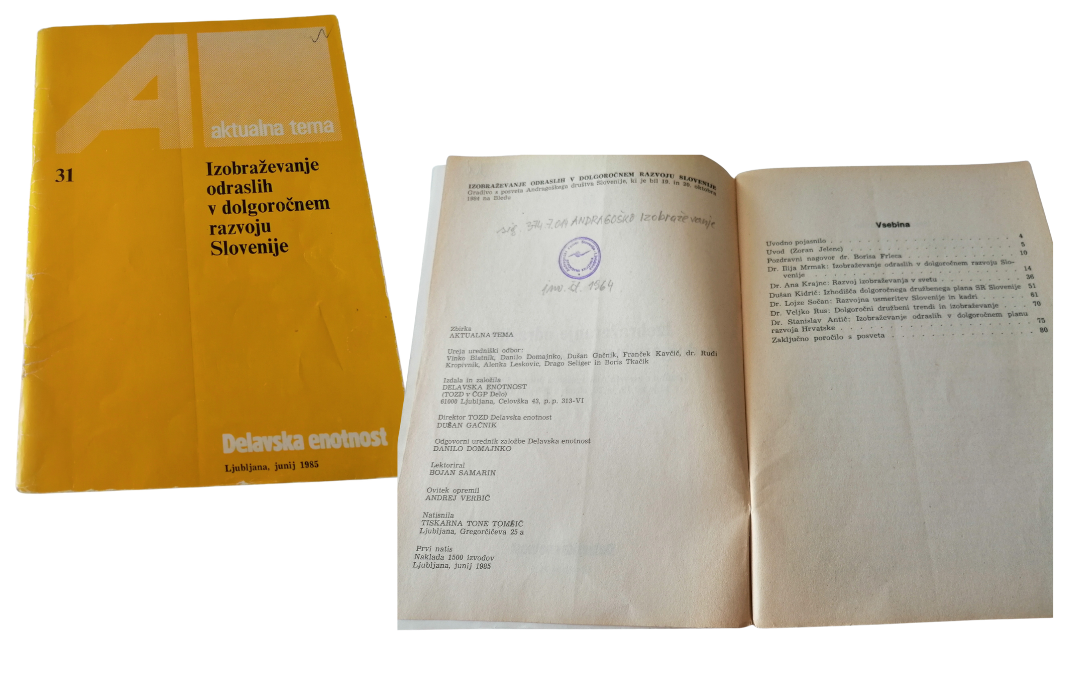Among them was the finding that in Slovenia, we need an institution that would “develop information, documentation, guidance, research and development and coordination function for the field of adult education.” In addition to the SAEA, the initiative to establish the Institute was supported by other institutions and individuals in the field of adult education or andragogy. Among the most active were the Community of Educational Centres and the Department of Andragogy at the Faculty of Arts, University of Ljubljana. But there were also those who thought that in ALE, we do not need a new institution, but only more money.
As the director of the newly established SIAE, I kept reminding the Minister in our first conversation that the purpose of the Institute should not be limited to solving current problems, which he as a minister sees, as this would mean we are only “putting out fires”. Instead, we must set the SIAE programme broader.
The initiative for establishing the SIAE came to life only with the independence of Slovenia in 1991, when the ministry provided the material basis for establishing such an institute. The then Minister, Dr Peter Vencelj, saw the need for it mainly for the reason of the SIAE taking care of improving the educational structure of the Slovenian population, which was relatively low and could not be improved in the short term other than through adult education (schooling) and education (training) of the unemployed. Unemployment in Slovenia was rising rapidly and was becoming a major social problem.
As I tried to convince the Minister, the main task of the SIAE must be to develop a culture of adult learning in Slovenia, which goes beyond just schooling adults at various levels, with emphasis on only vocational education. The Institute must be based on the philosophy and strategy of lifelong learning and must meet all the needs of adults, potential users of ALE, for learning and education.
What is characteristic of the beginning of the Institute’s operation is that it was autonomous, relatively independent of the Ministry of Education (as it was called at the time) in designing the programme. At the beginning of the operation, the SIAE obtained funds to finance its activities from various sources; approximately one third (for research) was obtained from the Ministry of Science. Later, the influence of the Ministry of Education increased, as they saw the Institute primarily as a guidance institution for ALE, similar to the National Education Institute and the Institute for Vocational Education and Training in the field of education of children and youth.
When we designed the operation of the SIAE, the Danish Centre for Adult Education in Copenhagen was an important role model. In the beginning, we relied heavily on their experience and operation; however, that did not mean we were a copy of them.
At the beginning of its operation, the Institute had three organisational units/areas: development and research, education of adult educators and documentation and information activities. This is roughly the organisational structure even today. A large part of the SIAE staff structure was made up of experienced SAEA members, who SIAE recruited from the then-operating adult education institutions; the other part of the staff consisted of younger colleagues – the combination of experience and youth has proved to be successful.
Dr Zoran Jelenc (zoran.jelenc@guest.arnes.si)


